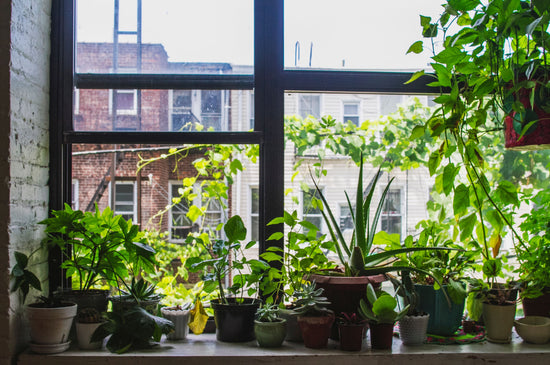Top Watering vs. Bottom Watering: Which Method Is Best for Your Plants?
Watering is one of the most important aspects of plant care, but did you know there’s more than one way to hydrate your greenery? Top watering and bottom watering are two common methods, each with its own benefits and best-use scenarios. Choosing the right technique depends on your plant's needs, soil type, and even your personal schedule. This guide breaks down the differences between top and bottom watering, helping you make the best decision for your indoor plants.
What Is Top Watering?
Top watering is the most traditional method of watering plants, where water is poured directly onto the soil surface. This technique is quick, simple, and works well for most houseplants.
How to Top Water
- Pour water slowly onto the soil until it’s evenly moist.
- Keep watering until you see excess water draining from the bottom of the pot.
- Empty the saucer or cachepot to prevent root rot.
Benefits of Top Watering
- Thorough Hydration: Ensures the entire root system gets watered, especially for plants in well-draining soil.
- Washes Away Salts: Flushing water through the soil helps remove excess fertilizer salts that can build up over time.
- Easier Routine: Requires no special setup, making it the most straightforward option for daily plant care.
When to Use Top Watering
- For plants that need frequent hydration, such as ferns and calatheas.
- For soil that drains well and doesn’t retain excess moisture.
What Is Bottom Watering?
Bottom watering involves placing the plant's pot in a container of water, allowing moisture to soak up from the drainage holes at the bottom. This method ensures the roots get hydrated without wetting the foliage or soil surface.
How to Bottom Water
- Fill a basin or sink with a few inches of water.
- Place the plant’s pot in the water and let it sit for 10–20 minutes.
- Check the topsoil to ensure it’s evenly moist, then remove the pot and let it drain before returning it to its place.
Benefits of Bottom Watering
- Encourages Strong Root Growth: Promotes deeper root development as the plant draws water from below.
- Prevents Overwatering: Allows the plant to absorb only what it needs, reducing the risk of root rot.
- Keeps Leaves Dry: Ideal for plants sensitive to water on their foliage, such as African violets.
When to Use Bottom Watering
- For plants in soil that tends to compact, as this method prevents water from pooling on the surface.
- For plants prone to fungal diseases, as it avoids wetting the leaves.
- For plants in terracotta pots, which absorb and distribute water evenly.
Key Differences Between Top Watering and Bottom Watering
- Water Distribution: Top watering hydrates from the surface down, while bottom watering pulls moisture up from the roots.
- Salt Buildup: Top watering flushes out fertilizer salts; bottom watering can lead to salt accumulation if not alternated with top watering.
- Fungal Risk: Top watering can occasionally promote fungal issues on leaves, whereas bottom watering avoids wet foliage.
Which Method Is Best?
The best watering method depends on your plant and its environment. A combination of both methods often works well: use top watering to flush out salts and bottom watering to promote strong root health.
Tips for Effective Watering
- Check Soil Moisture: Always feel the soil before watering. Most plants prefer their top inch of soil to dry out before their next drink.
- Use the Right Pot: Ensure your pot has drainage holes to prevent water from sitting at the bottom and causing root rot.
- Know Your Plant’s Needs: Some plants thrive with consistent moisture, while others, like succulents, prefer to dry out between waterings.
FAQs About Watering Plants
Q: Can I overwater with bottom watering?
A: Yes, if you leave the pot sitting in water for too long or water too frequently. Always allow the soil to dry slightly before bottom watering again.
Q: Is top watering bad for plants?
A: Not at all. Top watering is a reliable method for most plants, especially when done properly to avoid soggy soil.
Q: How often should I alternate between top and bottom watering?
A: Alternate every few waterings to balance salt buildup prevention and root hydration.
Q: Do all plants respond well to bottom watering?
A: Not all plants benefit equally. Plants with shallow root systems may not absorb enough water from below.
Choosing the right watering method ensures your plants stay healthy, hydrated, and vibrant. Experiment with both techniques and see which one works best for your indoor garden.





